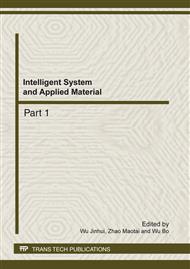[1]
Pecora L M, Carroll T L. Synchronization in chaotic systems. Physical Review Letters, 1990, 64(8): 821~827.
Google Scholar
[2]
Carroll T L, Pecora L M. Synchronizing chaotic circuits. IEEE Transactions on Circuits and Systems, 1991, 38(4): 453~456.
DOI: 10.1109/31.75404
Google Scholar
[3]
Chen G, Dong X. From chaos to order: methodologies, perspectives and applications. Singapore: World Scientific, 1998, 12~27.
Google Scholar
[4]
Wang G R, Yu X L, Chen S G. Chaotic control, synchronization and utilizing. Beijing: National Defence Industry Press, 2001, 281~455.
Google Scholar
[5]
Wang X Y. Chaos in the complex nonlinearity system. Bejjing: Electronics Industry Press, 2003, 91~113.
Google Scholar
[6]
Mainieri R, Rehacek J. Projective synchronization in three-dimensional chaotic systems. Phys. Rev. Lett., 1999, 82(15-12): 3042~3045.
DOI: 10.1103/physrevlett.82.3042
Google Scholar
[7]
Xu D L, Li Z. Controlled projective synchronization in nonpartially-linear chaotic systems. Int. J. Bifur. Chaos, 2002, 12(6): 1395~1402.
DOI: 10.1142/s0218127402005170
Google Scholar
[8]
Kim C M, Rim S H, Key W. Anti-synchronization of chaotic oscillators. Phys. Lett. A, 2003, 320(1): 39~46.
Google Scholar
[9]
Hu J, Chen S H, Chen L. Adaptive control for anti-synchronization of Chua's chaotic system. Phys. Lett. A, 2005, 339(6): 455~460 Fig 1 The chaotic attractor of system (6) (a) the time response of x1(t) and y1(t) (b) the time response of x2(t) and y2(t) (c) the time response of x3(t) and y3(t) (d)the error signals e1(t), e2(t) and e3(t) Fig2 The simulation result of system (7) and (8) when (a) the time response of x1(t) and y1(t) (b) the time response of x2(t) and y2(t) (c)the time response of x3(t) and y3(t) (d) the error signals e1(t), e2(t) and e3(t) Fig3 The simulation result of system (7) and (8) when (a) the time response of x1(t) and y1(t) (b) the time response of x2(t)and y2(t) (c)the time response of x3(t)and y3(t) (d) the error signals e1(t), e2(t) and e3(t) Fig 4 The simulation result of system (7) and (8) when.
DOI: 10.1515/9783112347485-017
Google Scholar


